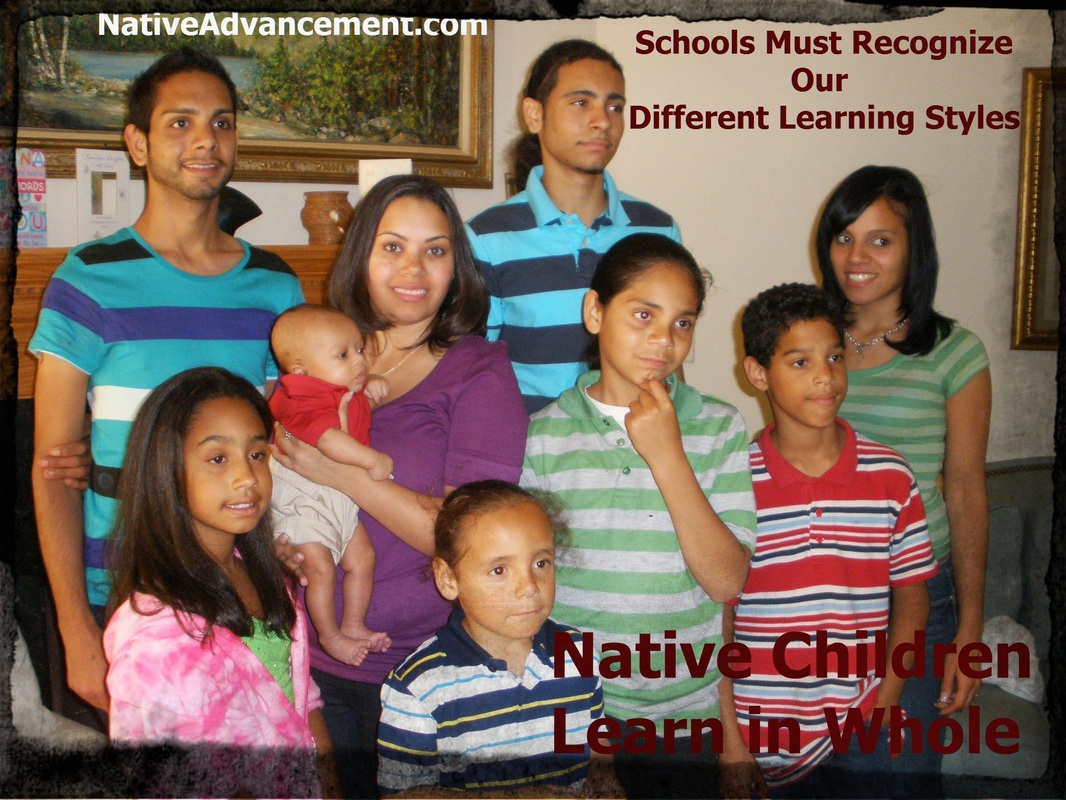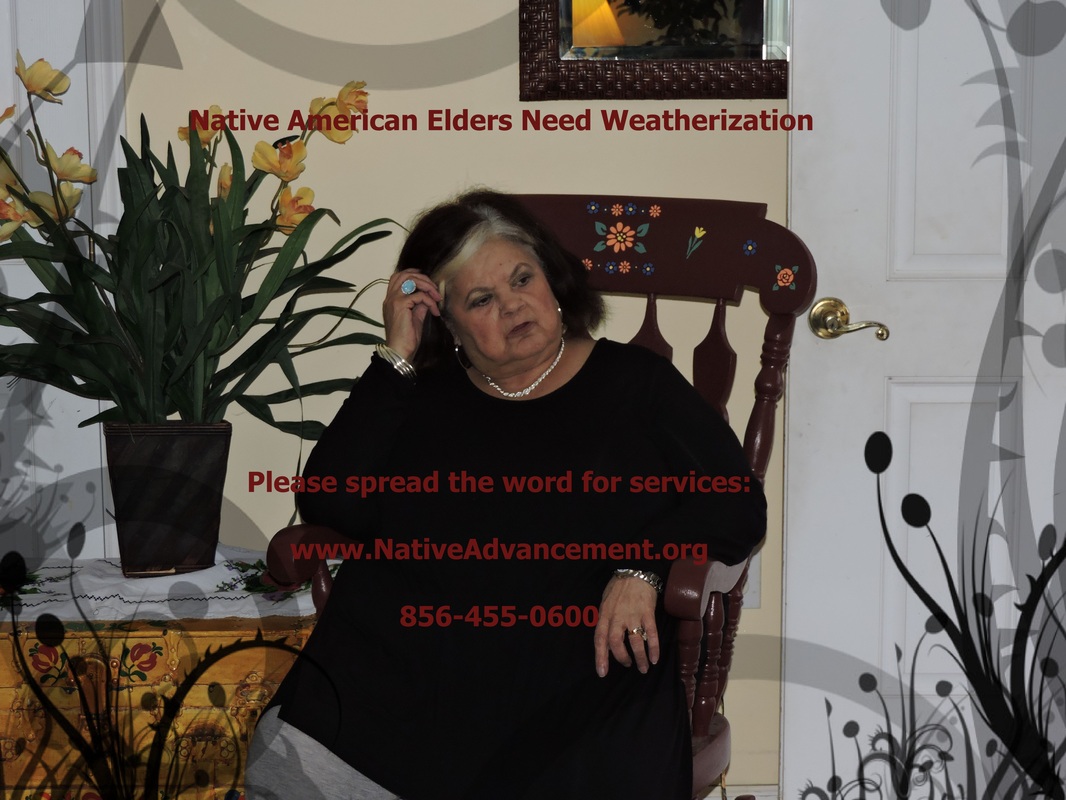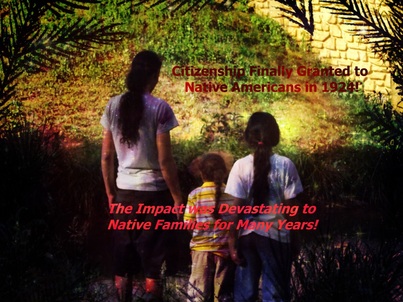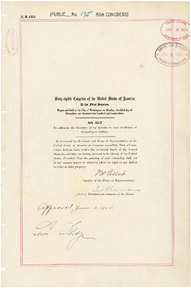|
The results are staggering! The new generation is still faced with the same educational issues and the problem is not the Native Community!
Thanks to the “Learning Style Quiz” taken by so many, we have resulted in the conclusions outlined by countless research. http://www.nativeadvancement.com/what-is-your-learning-style.html The quiz asked 20 questions in reference to data and research gathered by studies dating back to the 1950’s of actual observations, interviews and Native American schools and communities. The quiz is open to all cultural backgrounds and therefore, provides a comparison to the different types of learning results. The more points scored determines the learning style of many Native Americans and is included in years of research. The highest possible score is 200. So far, 70% of test takers are of Native American communities, 20% at least 2 or more grandparents of Native communities and 10% of non-Native communities. Even with this ratio, the total scores for all questions were in the high 180’s. The 10% non-Native results were under 50! The statement below from: The Learning Styles of Native American Students and Implications for Classroom Practice Melanie Price, Michael Kallam, and John Love Southeastern Oklahoma State University http://www.se.edu/nas/files/2013/03/NAS-2009-Proceedings-M-Price.pdf must be addressed further. ”It is apparent that many teachers do not have an understanding of the degree to which culture affects learning. Many teachers are not able to identify the learning style differences and to employ culturally responsive techniques to address the needs of diverse populations. Often teachers view differences in approach to learning as problems inherent in the students. They may be noticed as oppositional and defiant, inattentive, and under-motivated (Kallam, Hoernicke, & Coser, 1994). In order to help students learn, teachers need to adapt their teaching to support a variety of learning styles (St. Charles & Costantino, 2000).” We are still conducting the test and ask that you please participate! http://www.nativeadvancement.com/what-is-your-learning-style.html The Native American Advancement Corporation (NAAC) recognizes the need to provide weatherization assistance to Native Americans by taking into account the States plan of 5% served each grant year.
Management and staff have made a concerted effort to support and encourage service delivery through the established weatherization office within the tribal territory of Cumberland County, New Jersey. Attending the tribes meetings and events have proven to be very beneficial. Phone calls and online materials are okay for dispensing information, but we know they leave something lacking when we really want to develop and sustain a high-quality relationship. The local tribe initially expressed an urgent need for the State to address the lack of weatherization needs being met of their people. NAAC's most astounding need is to expand weatherization services to Native Americans through the successful system of weatherization projects, with an emphasis on serving those living in tribal territories. Nanticoke Lenni Lenape Headquarters gives an assortment of effort to the tribal community and additionally operates their own social administration programs, incorporating culture of social understanding, to expand their abilities in living up to expectations with tribal families and individual Native Americans. Our first undertaking was is to investigate the reasons why services are not arriving at low-income Native Americans in conjunction with service for the general low-income population. Neighborhood CAP agencies get the lion's share of weatherization applications through the low-income LIHEAP program. This system is granted through the State of New Jersey. Not one tribe controls their own LIHEAP program for individuals for their territory and does not get the grants specifically from the State of New Jersey or the U. S. Bureau of Health and Human Services. CAP organizations never see the tribal need nor are able to help applicants; therefore, they don't get numerous tribal referrals for weatherization. There are different obstructions to the administration of this program, including a past filled with broken promises; lost connections as individuals change positions or move; broken trust; the geographic area of the tribes; and mistaken assumptions about effort, to give some examples. The difficulties are as various and differed as the individuals in the tribe. NAAC's part is to encourage dialog among tribe to discuss their needs and open doors, their history, and what's to come. We work to help the tribe comprehend their regular cultural needs and their uniqueness when it comes to weatherization. Nearby organizational projects have generally depended on submission through LIHEAP to disseminate weatherization applications. This outreach is uninvolved. It relies on upon another person to make the move and complete. On the off chance that nobody applies, “no activity is required” seems to be the attitude. Face to face outreach is dynamic. It obliges looking for, connecting, seeking after. Face to face outreach obliges an arrangement. Face to face outreach is a mindset, a method for approaching those in need. It must be incorporated with the project, not included if advantageous. Face to face outreach is not compelling when it is just being added to a program. NAAC is the contact that organizations must depend on to create outreach when focusing on weatherization for Native Americans in this territory. The tribal system of face to face outreach is exceptional. NAAC was established first to focus on servicing just individuals from tribal region as per the New Jersey tribal administration strategy. Be that as it may, NAAC has developed into a full weatherization organization that is presently weatherizing all homes which do not at most times include tribal residents. Initially, NAAC was also chosen to serve on the advisory board for the tribal initiative. The group is composed of representatives from all areas of targeted outreach populations. This was to be a model for representation working closely with the tribes to meet the challenges of fitting the weatherization program into their established outreach. These difficulties have been correspondence issues and they are not particularly Indian issues which has proven to be unsuccessful. For more information about weatherization services, please contact NAAC at 856-455-0600. This quiz is for everyone! Are you aware that there is a huge amount of research and results based on your Native American learning styles? This information is available and we can provide this to you and all we ask is that you answer 21 questions that directly reflect your strengths.
Rate on a scale of 1 - 10 1 if you strongly DISAGREE and 10 if you strongly AGREE Just click the link below to take the quiz! https://www.surveyplanet.com/54dbbfa5e7ad4edc6093cf2f "The First Illegals! Unbelievable is all we can say when we describe this forgotten history fact! "Act of June 2, 1924, Public Law 68-175, 43 STAT 253, which authorized the Secretary of the Interior to issue certificates of citizenship to Indians." Congress Granted Citizenship to All Native Americans Born in the U.S. (1)" "Native Americans have long struggled to retain their culture. Until 1924, Native Americans were not citizens of the United States. Many Native Americans had, and still have, separate nations within the U.S. on designated reservation land. But on June 2, 1924, Congress granted citizenship to all Native Americans born in the U.S. Yet even after the Indian Citizenship Act, some Native Americans weren't allowed to vote because the right to vote was governed by state law. Until 1957, some states barred Native Americans from voting. At the time of the Indian Citizenship Act, an act called the Dawes Severalty Act shaped U.S. Indian policy. Since 1887, the government had encouraged Native Americans to become more like mainstream America. Hoping to turn Indians into farmers, the federal government gave out tribal lands to individuals in 160-acre parcels. Unclaimed or "surplus" land was sold, and the money was used to establish Indian schools. In them, Native American children learned reading, writing, and social habits of mainstream America. By 1932, the sale of unclaimed land and allotted land resulted in the loss of two-thirds of the 138 million acres Native Americans had held prior to the Act. A 1928 study known as the Meriam Report assessed the problems of Native Americans. The report revealed to the government that its policies had oppressed Native Americans and destroyed their culture and society. The people suffered from poverty, exploitation and discrimination. This study spurred the passage of the 1934 Indian Reorganization Act. This Act returned some of the surplus land to Native Americans and urged tribes to engage in active self-government. The U.S. government invested in the development of health care, education and community structure. Quality of life on Indian lands improved. Today some Native Americans run successful businesses, while others still live in poverty. " (2)
1) http://www.archives.gov/historical-docs/todays-doc/?dod-date=602 2) http://www.americaslibrary.gov/jb/jazz/jb_jazz_citizens_3.html Are you aware that we are still in company of those who lived through this period? Are you aware that we are still in this process of reorganization? |




 RSS Feed
RSS Feed